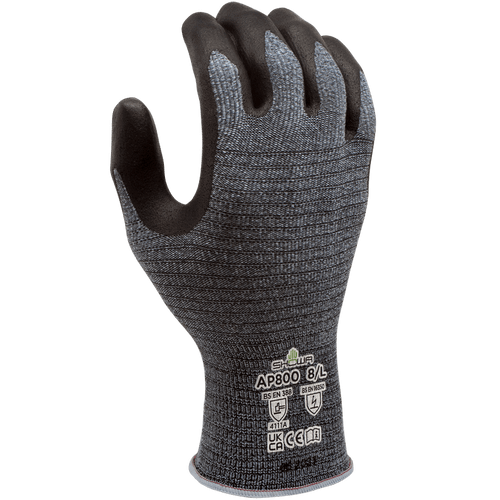Showa Gloves
Showa AP800 Microporous Nitrile Coating Embossed S-Shaped Gloves - Sold 12 Pairs
- SKU:
- BE-AP800
- MPN:
- AP800
- Availability:
- Ship 1-2 weeks
- Weight:
- 3.00 LBS
- Width:
- 10.00 (in)
- Height:
- 6.00 (in)
- Depth:
- 6.00 (in)
- Shipping:
- Calculated at Checkout
Description
The new AP800 has an embossed S-shaped palm finish with a microporous nitrile coating containing conductive carbon that makes these gloves touchscreen compatible.
Benefits:
- Durable
- Robust grip
- Breathable
- Form-fitting
- Latex-free
- Abrasion-resistant
- Lightweight
- Silicone Free
Features:
- Microporous nitrile
- Material: Engineered yarn
- Material: Microfibre
- Embossed microporous nitrile coating
- Ergonomic
- Optimal liner design
- Silicone-free
- Anti-static liner
- GRIP: S Shape Palm Finish
- SIZES: S–XL (6/S | 7/M | 8/L | 9/XL | 10/XXL)
- Color: Grey/Blue
Recommended For:
- Automotive repairs and maintenance
- Electrical part and components handling
- Mechanical and engineering
Hazards:


What is ESD?
Electrostatic discharge (ESD) is a sudden and momentary flow of electric current between two electrically charged objects caused by contact, an electrical short or dielectric breakdown.
American National Standards Institute ANSI/ESD 15.1 - 2019
How to prevent ESD? Change the direction of the electrostatic charge (flow of electrons) migration to go into the ground instead of sensitive areas. – Ground yourself by wearing an ESD wrist strap. – Wear ESD footwear, clothes, and gloves. – Utilize an anti-static mat.
We all experience electrostatic discharge from time to time. Some of the most common are while doing everyday tasks. For example, feeling a shock after walking across a carpet and then touching a metal object or sliding across a car seat and touching the door handle
SOLD PER DOZEN













